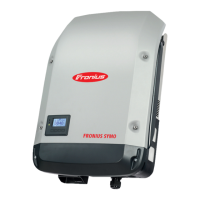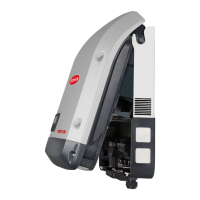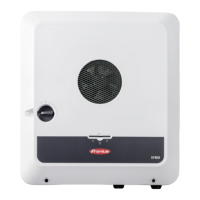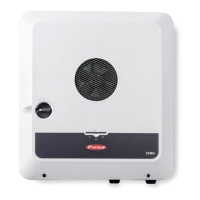14
Connecting the inverter to the public grid (AC side)
Safety
WARNING!
Danger due to incorrect operation and incorrectly performed work.
This may result in serious injury and damage to property.
► Only qualified staff are authorised to commission your inverter and only within the
scope of the respective technical regulations.
► Read the Installation and Operating Instructions before installing and commissioning
the equipment.
WARNING!
Danger due to grid voltage and DC voltage from solar modules that are exposed to
light.
This may result in an electric shock.
► Ensure that both the AC side and the DC side of the inverter are de-energised before
carrying out any connection work.
► Only an authorised electrical engineer is permitted to connect this equipment to the
public grid.
CAUTION!
Danger due to incorrectly tightened terminals.
This may result in heat damage to the inverter, which may lead to fire.
► When connecting AC and DC cables, ensure that all the terminals are tightened to the
specified torque.
Monitoring the
grid
To provide the best possible grid monitoring, the resistance in the leads to the AC-side ter-
minals should be as low as possible.
Type of AC cable The following types of AC cable can be connected to the AC terminals of the inverter:
Preparing the alu-
minium cables for
connection
The AC-side terminals are suitable for connecting single-wire, round aluminium cables. Be-
cause of the formation of a non-conductive oxide layer due to the reaction of aluminium
with air, the following points must be considered when connecting aluminium cables:
- the reduced rated currents for aluminium cables
- the connection conditions listed below
Always follow the cable manufacturer instructions when using aluminium cables.
When designing cable cross-sections, take local regulations into account.
Connection conditions:
- copper or aluminium: round, single wire
- Copper: round, finely stranded up to conductor category 4
Cu / Al Cu

